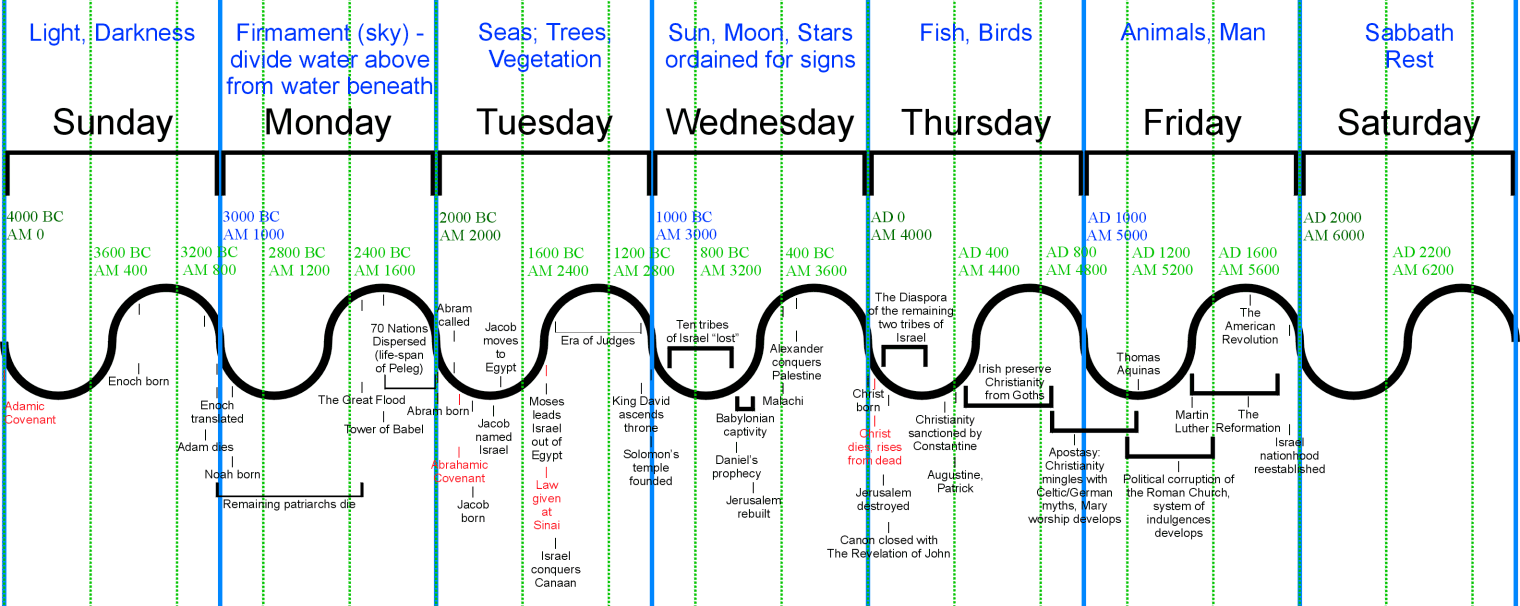
|
· BACK TO THEOLOGY PAGE · DAVID'S HOME PAGE · From the "What if ..." Department:The Seven Days of HistoryThe Psalmist, speaking of God, tells us, "For a thousand years in your sight are like a day that has just gone by." (Ps. 90:4). Some have taken this to mean that 1000 years = 1 day of God's time. Probably, it's a poetic device intended to mean only that God's perpective is not restricted by the terrestrial time line. Nevertheless, via double-meaning, there may be some truth to the equivalency theory for certain purposes. It seems that there are often layers of meaning in the Old Testament. Assuming the premise to be true for the sake of argument, it occurred to me that history might be divisible into 7 days of 1000 years each. How literal-minded can you get, huh? That led me to the admittedly wild idea that the creation story, in addition to a literal account of the creation of the world, might contain a hidden prophecy about all subsequent terrestrial history. (No doubt, some Kabalist has beat me to the punch on this by hundreds or thousands of years, but don't pop my bubble just yet.) Following the pattern in Hebrew culture and in the story itself, the first half of each "day" is "evening" (night time), and the second half is "morning" (day time). In the graph below, "evening" is represented by the trough phase of a sine wave cycle, while "morning" is represented by the peak phase. I've observed the following conventions:
I tried to make this graph small enough to fit on the computer screen all at once, but that made the text too small to read. Increasing the text size made the graph too crowded. Hey, we're covering 7000 years on one line, here; I think that entitles me to a little scrolling! :-P Please remember that the following is entirely speculative. |

|
Some observations, assuming, hypothetically, the validity of the idea and accuracy of the data:
· BACK TO THEOLOGY PAGE · DAVID'S HOME PAGE · September 2000
|